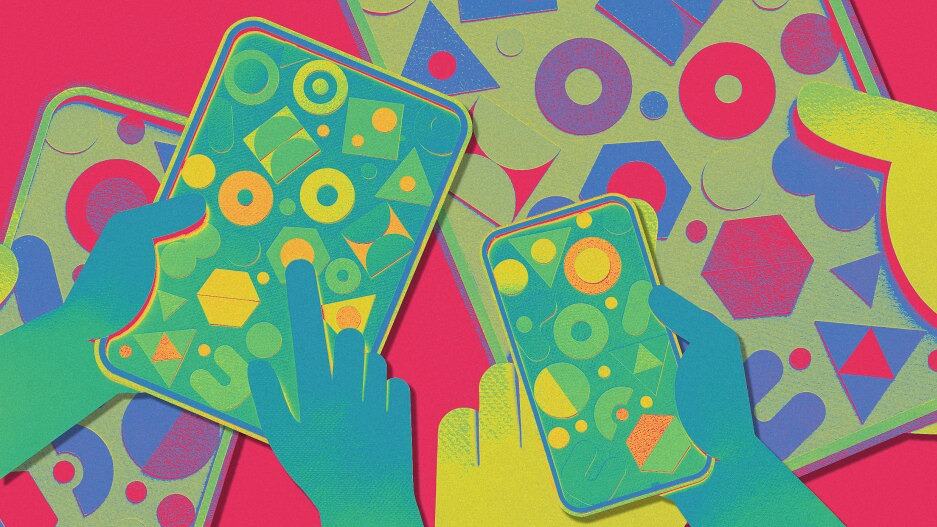- | 8:00 am
I trained the senior designers at Apple and Meta. Here’s how they developed faster than others
Five factors that help engineers level up their design skills.

Our VP of engineering recently asked me how we could level up the design skills of our engineers. It made me think about the question, “How do great designers become great?”
My answer to him? Five hours of daily meditation and fasting.
He didn’t buy it, so here was my (real) five-part breakdown.
1. TRAINING THROUGH PRODUCT CYCLES
Bootcamps and schooling are currently ill-equipped to train designers on what actually matters. As with much of education, the focus is often on the tooling and not the application of those tools. They’ll teach you about personas, user journeys, diary studies, and wireframing—but more important in the field than any of these is actually knowing when you would use one or the other, or skip using them altogether.
That’s why many of the best designers are self-taught.
They’re able to self-teach because they go through an incredible number of product cycles which exposes them to the applications of design tools and methods. They’re also critical of their outcomes and whether what they did added, detracted, or did nothing to cause those outcomes.
A product cycle includes investigating a problem, designing a solution, and seeing if it succeeded or failed (did it actually make peoples’ lives better?)
One note: A full product cycle must include someone using what you designed. There’s no way around it. Whether that means you learn to code, build a functional prototype, use no-code tools, or befriend some engineers, nothing can replace the real thing.
2. TRAINING THROUGH PROBLEM VARIATION
Okay, so the answer is to design lots and lots of features and products?
Yes, but. . . .
One caveat to simply increasing the number of product cycles is that the number of product cycles also has to correlate with the variety in problem type. Even if you go through many product cycles, if you work on the same types of problems repeatedly, you won’t be as good.
Problem type variation could include things like designing for enterprise businesses versus consumers. With the former, you’re often doing deep user research and can’t rely as much on statistically significant behavior, because five customers probably make up half of your business’ revenue. With the latter, it’s impossible to talk to 50% of your customers—you may have to rely on quantitative data more.
Another type of variation is the stage of product you’re designing: Are you inventing a new product from scratch? Or are you iterating on and improving an existing product?
The more cycles and the more variety, the better the designer!
As a side note, this is why having engineers do design inherently handicaps their design skill growth. By title, engineers have to spend some amount of time engineering, which will naturally reduce the number of product cycles they can go through.
3. DEVELOP YOUR CURIOSITY (YES, IT CAN BE ‘DEVELOPED’)
The best designers I’ve hired (who have worked as lead product designers at Apple, Meta, and more) simply care more than everyone else. It sounds trivial but it’s harder to find than you’d think.
Watch friends use physical and digital products. When designing, go out of your way to get the smallest detail right. Make five different versions and debate the smallest detail (should this setting be a checkbox or toggle? Why?)
I didn’t start super curious about people, and I think it’s a myth that it’s an inborn talent (though some may have more of an affinity for it than others). You can absolutely push yourself to notice, care, and observe more closely than others.
4. FIND A GOOD MENTOR/COACH
The point of a design manager/coach is to fast-track the product cycles. Do I believe that a rockstar designer can outpace an average designer with a good coach? Yes, but it’s rare.
I personally sped forward many years from simple conversations with some top-tier mentors. One of my best mentors was the first designer at Airbnb and, in a few conversations, got me from firing my design hires to hiring juniors who in a few short years became leads at FAANG.
5. LEARN BASIC VISUAL PSYCHOLOGY
While I’m not a fan of UX bootcamps, I am a fan of visual communications courses. Understanding shape, position, color, space, and how they contribute to or detract from how visuals are perceived is important and is a craft that pre-dates digital products entirely.
Learn about how our eyes try to group like items together (Gestalt) or how we read left to right, top to bottom. These visual principles help UX and product designers construct flows, interfaces, and more. Don’t neglect these, they’re important.
This article originally appeared in UX Planet and is reprinted with the author’s permission.





































